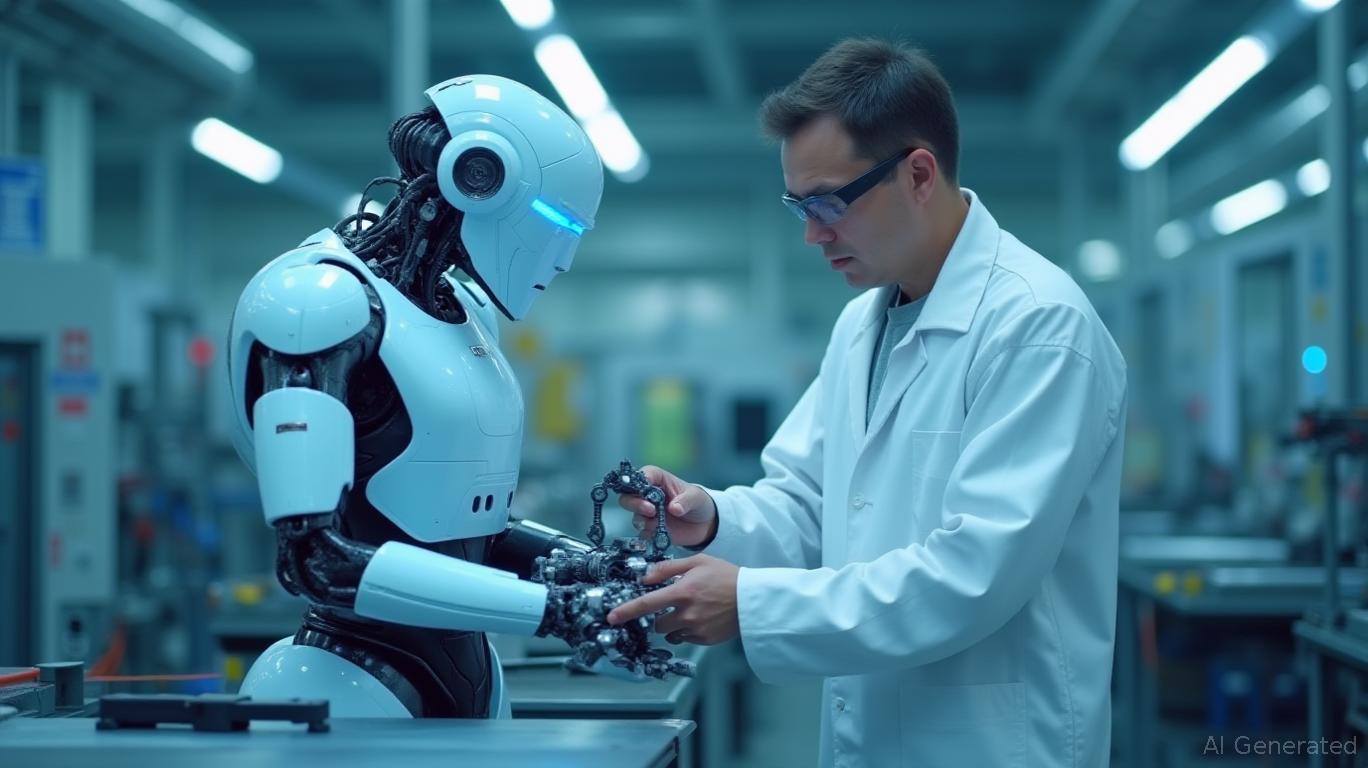Renault's Strategic Investment in Wandercraft: A Catalyst for the AI-Driven Robotics Sector
The automotive industry is no longer confined to combustion engines and assembly lines. Renault Group's recent strategic partnership with Wandercraft, a French pioneer in AI-enabled robotic exoskeletons, marks a pivotal step in the convergence of automotive manufacturing and robotics. This alliance not only redefines Renault's role in next-gen mobility but also positions it as a leader in an emerging sector poised to reshape industries and healthcare.
A Marriage of Industrial Scale and Cutting-Edge Robotics
On June 6, 2025, Renault announced its minority stake in Wandercraft, a company renowned for its Atalante exoskeletons used globally in hospitals to assist mobility-impaired patients. The partnership aims to develop the Calvin family of robots, designed to automate repetitive, ergonomically challenging tasks in Renault's factories. By integrating Wandercraft's neural network-driven robotics—trained on real-world human movement data—with Renault's expertise in mass production and cost optimization, the collaboration seeks to reduce manufacturing costs while enhancing productivity.

The first model, Calvin 40, was created in just 40 days, demonstrating the agility of this partnership. Beyond manufacturing, the alliance also targets broader markets. Wandercraft's Eve exoskeleton, designed for quadriparetic individuals, is set for commercial release, while a clinical trial at the James J. Peters VA Medical Center evaluates its efficacy in enabling hands-free mobility for spinal cord injury patients. This dual focus—industrial automation and medical innovation—expands the potential revenue streams for both companies.
Why This Matters for the Robotics Sector
The automotive industry's shift toward automation has long been evident, but Renault's move highlights a deeper trend: robotics as a strategic growth driver. By leveraging its industrial scale to scale Wandercraft's technologies, Renault is accelerating the commercialization of robotics in two high-demand sectors:
1. Healthcare: Exoskeletons like Eve address a $12 billion global assistive tech market, projected to grow at 7% CAGR through 得罪.
2. Industrial Automation: The global robotics market is expected to hit $178 billion by 2027, driven by manufacturing's need for cost-effective, human-augmented systems.
The partnership also underscores a strategic advantage: design-to-cost expertise. Renault's ability to reduce production costs for Wandercraft's robots and exoskeletons—critical for mass adoption—could outpace competitors reliant on niche markets.
Data-Driven Insights: Renault's Positioning in the Market
Renault's stock price has trended upward since 2023, reflecting investor confidence in its electrification and sustainability initiatives. However, its foray into robotics could amplify this trajectory.
While Renault's automotive division remains its core, the Wandercraft investment signals a diversification into high-margin, high-growth robotics. Competitors like Toyota (which invests in AI robotics) or Volkswagen (exploring autonomous logistics) face similar opportunities, but Renault's focus on human-centric robotics—balancing productivity and healthcare—sets it apart.
Risks and Investment Considerations
The partnership is not without challenges. Scaling exoskeleton production for medical use requires regulatory approvals, and industrial robots must prove cost savings in real-world settings. Additionally, competition from tech giants like Boston Dynamics or specialized firms like Agility Robotics could intensify.
Yet, the strategic alignment of Renault's industrial muscle with Wandercraft's AI prowess mitigates these risks. Investors should note:
- Long-Term Play: Robotics adoption in manufacturing and healthcare is still nascent, offering decades of growth.
- Valuation: Renault's current valuation does not yet reflect robotics' potential, suggesting upside.
- Sustainability Synergy: Aligns with Renault's 2040 carbon neutrality goal by reducing labor strain and energy use.
Conclusion: A Blueprint for Future Mobility
Renault's investment in Wandercraft is more than a corporate partnership—it's a blueprint for the future of mobility. By merging automotive manufacturing expertise with advanced robotics, Renault is not only addressing its own productivity challenges but also unlocking new markets. For investors, this signals a compelling entry point into the AI-driven robotics sector, where industrial and healthcare applications are increasingly intertwined.
While execution risks remain, the strategic logic is clear: companies that blend physical infrastructure with AI innovation will dominate the next era of mobility. Renault's move positions it at the forefront—a bet worth watching.

Comments
No comments yet